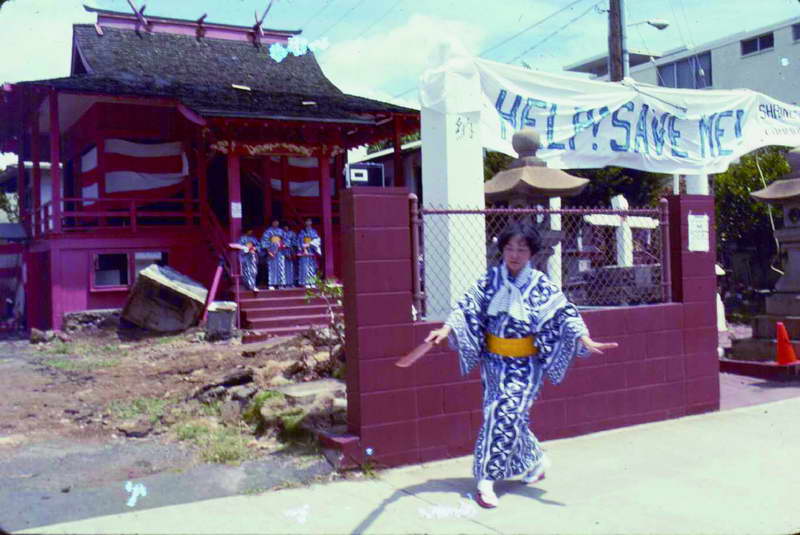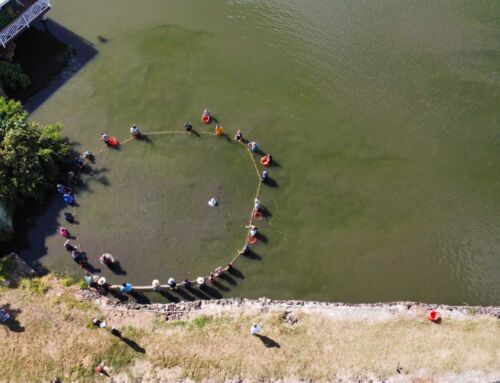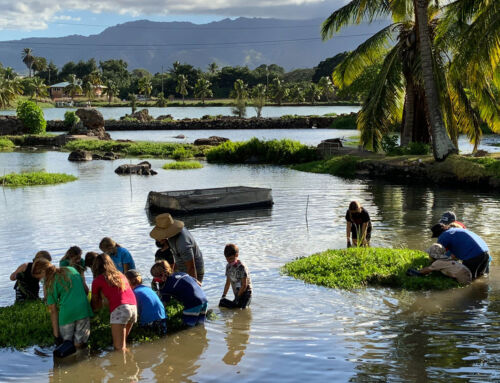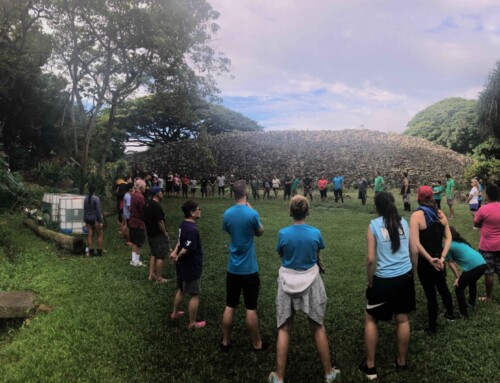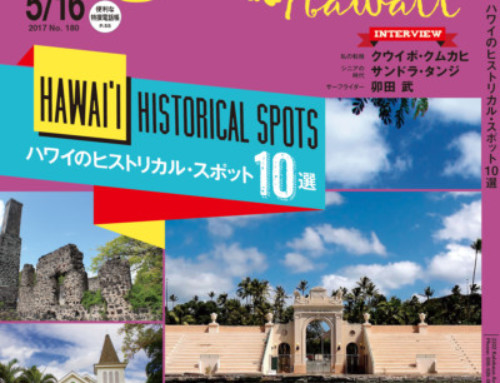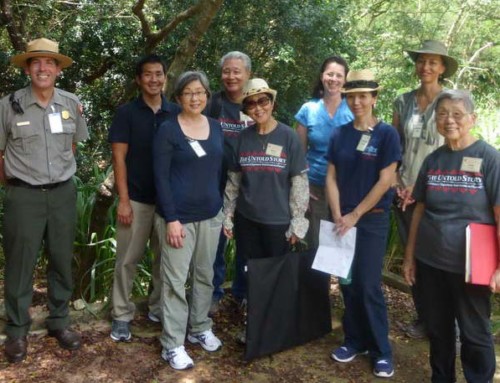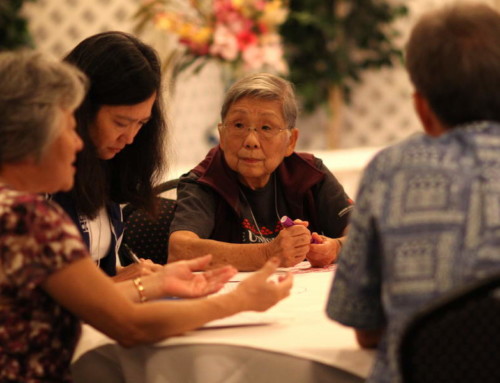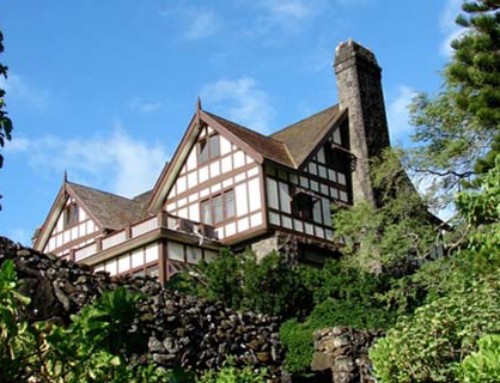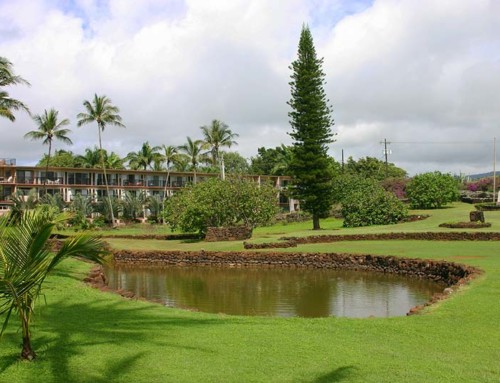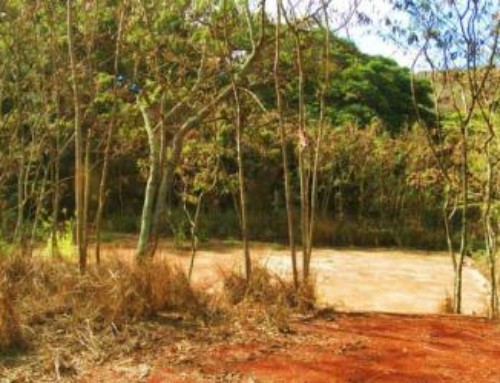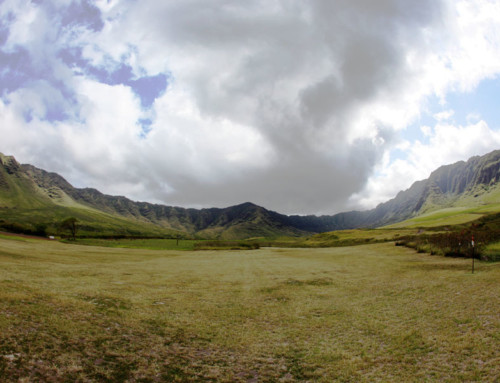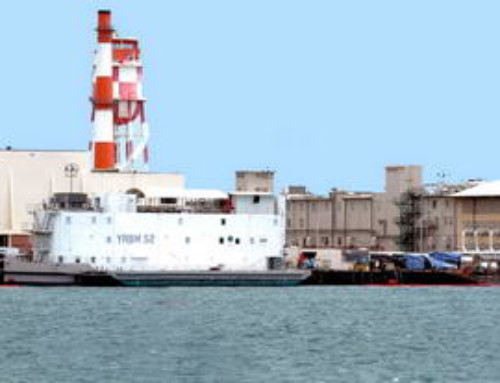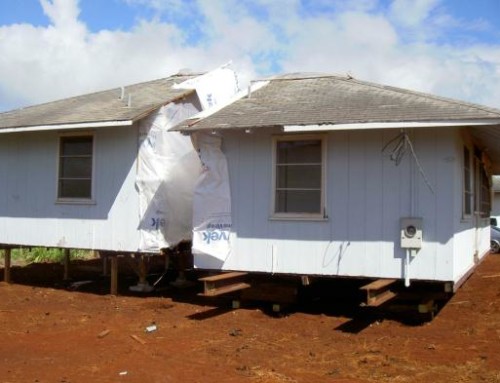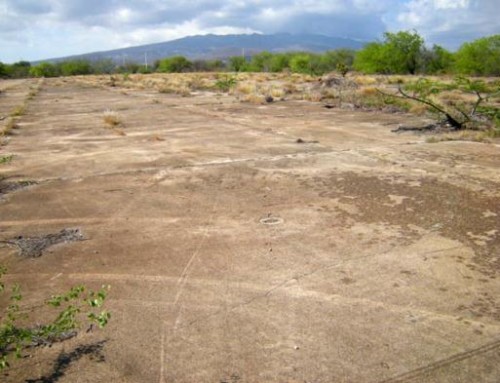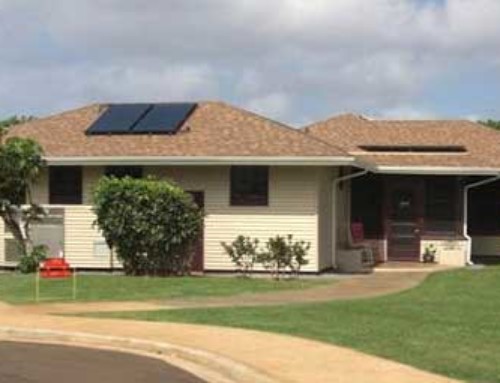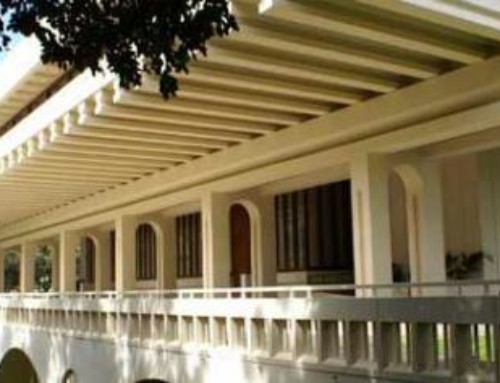By Kevin Kawamoto
The Wakamiya Inari Shrine at Hawaii’s Plantation Village in Waipahu has a new roof – and much more – thanks to contributions from numerous community members, businesses and the Freeman Foundation, in a generous grant administered by the Historic Hawai‘i Foundation.
The new roof marks a just-in-time triumph for this apple-red Shinto Shrine after its weathered shingles littered the grounds and leaks threatened its interior, housing an altar and religious and cultural objects. The new roof signals the second time the same group of volunteers rescued the Shrine, the first being when it faced demolition in 1979.
Dedicated volunteers, then instigated by religion professor Michael Molloy, assumed the cause to save the Shrine and move it to Waipahu with the aid of then-Gov. George Ariyoshi and then-union leader “Major” Hideo Okada.
Relocating to Waipahu cost the Shrine its roof, which had to be removed so the building could pass under bridges while it was moved successfully in the dead of night with police escort.
In Waipahu the roof-less Shrine was faithfully restored so that it remains architecturally significant “as the only example of this Shinto sect’s traditional shrine architecture on Oahu,” according to its nomination to the National Register of Historic Places. It has been listed there since 1980 (I.D. No. 80001285), as well as on the Hawaii Register of Historic Places.
Over the decades, however, the Shrine’s shingled roof deteriorated. The core members who had rescued the building three decades earlier again sprang into action and succeeded in raising funds to give the Shrine a new roof.
Thanks to local architect Lorraine Minatoishi, it has also been more closely restored to its original architectural integrity. Minatoishi studied old photographs of the Shrine in its glory in Mo‘ili‘ili and used her knowledge of Japanese architecture to design elements for the building’s roof that not only better replicate what the Shrine looked like during its Mo‘ili‘ili days, but also highlight some distinctive elements of Japanese shrine architecture.
This involved working with Kailua carpenter Brian Schatz. He created out of recycled redwood two chigi, decorative x-shaped design elements, mounted along the roof’s ridgeline, and three katsuogi, log-like elements mounted perpendicular to the ridgeline. The chigi and katsuogi, according to Encyclopedia of Shinto, have been distinct to Japanese architecture for millennia. (The katsuogi is sometimes referred to as a katsuyoi.)

This photo: Chigi and katsuogi taken from the back of Shrine shortly after they were installed in May 2013. photo: Glenn Ifuku
Top photo: Help-Save-Me banner in 1979 pleaded just before the Shrine was moved to make way for McCully Bicycle and Sporting Goods at 2124 S. King St. near Stadium Park. photo: Nancy Bannick
With Minatoishi’s expertise, they provide the finishing touches on this iconic Shrine’s refurbished look. They help the outdoor museum of Hawaii’s Plantation Village to tell more authentically the story of Island working-class history and of a lifestyle that fostered a unique multicultural society that enlightens thousands of schoolchildren and other visitors.
Before being moved to Waipahu in 1979, the Shrine was an elegant fixture in Honolulu’s Mo‘ili‘ili neighborhood. Built in traditional Japanese style by an architect known only as Haschun, the Shrine was originally erected in Kaka‘ako in 1914 at the direction of its founder, the Rev. Yoshio Akizaki.
Four years later it was moved to Mo‘ili‘ili as that part of Honolulu gave rise to a thriving and close-knit Japanese American community.
Most of Hawaii’s Japanese immigrants in the late 19th and early 20th centuries emigrated from rural prefectures of Japan, where farming and the natural environment were central to work and family life.
The spirit (Kami) of the Inari sect of Shintoism could influence a bountiful harvest, which probably appealed to the agrarian sensibilities of the Japanese immigrants who came to work on Hawaii’s sugar plantations. Statues of foxes are often seen at Inari shrines because the fox is considered the messenger of the deity Inari.
After Rev. Akizaki died, his son Takeo inherited the property and priestly duties. When the junior Akizaki died, the family decided to sell the property; the Shrine, slated for demolition, was moved to Waipahu.
There, the Shrine anchored development of Hawaii’s Plantation Village. (www.hawaiiplantationvillage.org). The Shrine’s historic structure adds to the authenticity of exact replicas of 25 plantation houses and structures once used by various Island cultures, including Hawaiian, Chinese, Portuguese, Puerto Rican, Japanese, Korean and Filipino. Thousands of all ages and ethnicities have since enjoyed and learned from this living-history museum and unique model of multicultural harmony.


